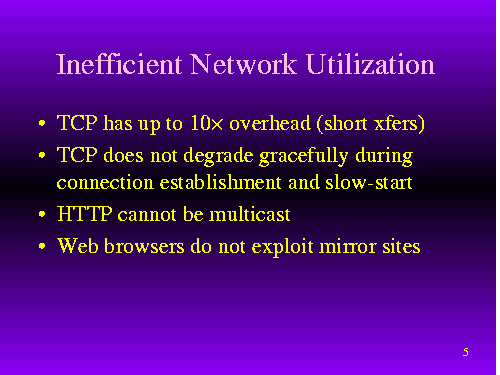
Click slide for next, or goto previous, first, last slides or back to thumbnail layout.
This slide summarizes some of the reasons why network links become congested.
10× overhead... Many TCP implementations require 10 packets to be exchanged between client and server just to open up a connection, send a brief request and response, and close the connection. The overhead decreases for longer transfers, but most HTTP transfers are short.
Does not degrade gracefully... once a connection is well-established, TCP's congestion control algorithms are pretty good at sharing a communications link so that everybody gets some bandwidth and little is wasted due to dropped packets. But for short transfers, most of the time is spent during the "connection establishment" and "slow start" modes, which do not share the channel efficiently.
HTTP cannot be multicast... HTTP, because it is based on TCP, is inherently point-to-point. No matter how many people are fetching the same web page over the same link (say from CNN Interactive's server), a separate copy will be transmitted to each one.
Browsers do not exploit mirror sites... There may be mirrors of some sites, but they aren't easily found or used, and may be out-of-date.
Click slide for next, or goto previous, or back to thumbnail layout.